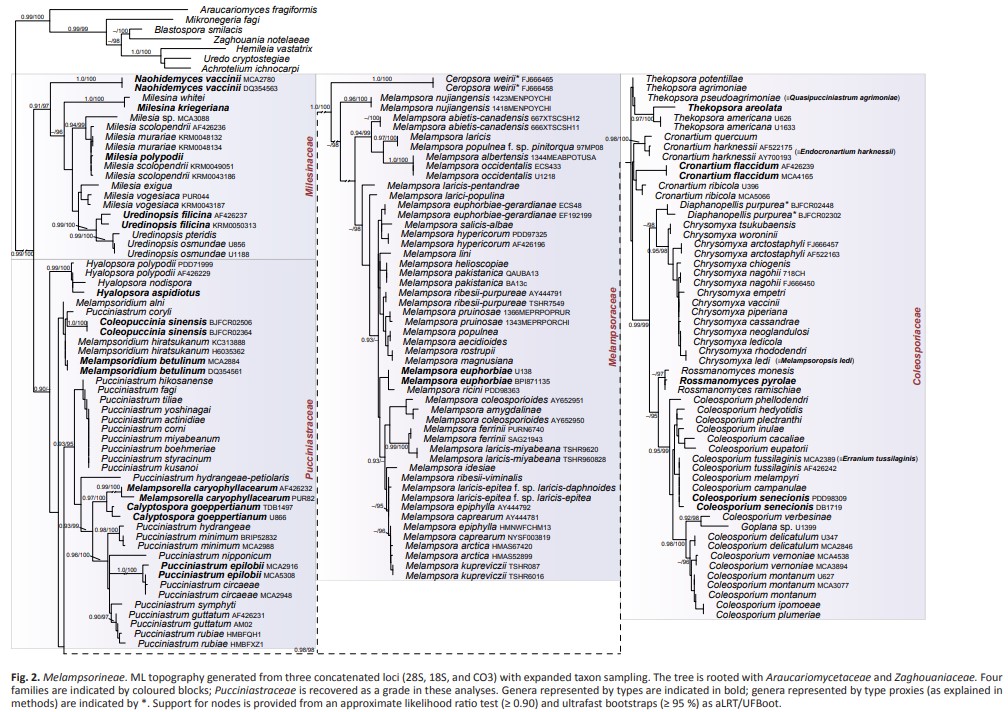Milesinaceae Aime & McTaggart, fam. nov.
MycoBank number: MB 836630; Index Fungorum number: IF 836630; Facesoffungi number: FoF;
Type genus: Milesina Magnus, Ber. Deutsch. Bot. Ges. 27: 325. 1909.
Diagnosis: Similar to other Melampsorineae, differing in either production of colourless urediniospores in species that infect ferns, or in production of milesia-type aecia in species that infect Ericaceae.
Description: With typically colourless sori, although urediniospores of Naohidemyces are orange, otherwise similar to Pucciniastraceae. Spermogonia Group I (mostly type 1, also type 2 and 3); aecia peridermium-type, milesia-type in Naohidemyces; uredinia milesia-type. Teliospores with dormant germination, 1- to many-celled, barely differentiated, sometimes laterally adherent, typically formed within host epidermal cells. Most species macrocyclic and heteroecious with sporothalli on ferns (excepting Naohidemyces on Ericaceae), and gametothalli on Pinaceae.
Included genera: Milesia, Milesina, Naohidemyces, Uredinopsis.
Host families: Pinaceae (Abies, Tsuga) (0-I); Ericaceae and some ferns in Polypodiales and Lygodium (II-III).
Notes: Early workers considered rust fungi on early diverging plant hosts (i.e., ferns) to be the “ancestral” Pucciniales. Several molecular phylogenetic studies have shown this not to be the case (e.g., Sjamsuridzal et al. 1999). However, the fern rusts are among the earliest diverging members of Melampsorineae (Fig. 2), the second major radiation of the rust fungi, and belong to the two earliest families in this suborder (Milesinaceae and Pucciniastraceae). Most of the species in Milesinaceae form sporothalli on fern species, except for Naohidemyces, which alternates between Tsuga and Vaccinium.
Aime et al. (2018b) recommended protecting the name Milesina Magnus over Milesia F.B. White. However, our data show that the type of Milesina, M. kriegeriana (Magnus) Magnus, is not congeneric with the type of Milesia, M. polypodii F.B. White (Fig. 2), thus we recommend retaining both genera at this time. Should future work demonstrate that Uredinopsis is polyphyletic, then disposition of these taxa will need revision.

Species
